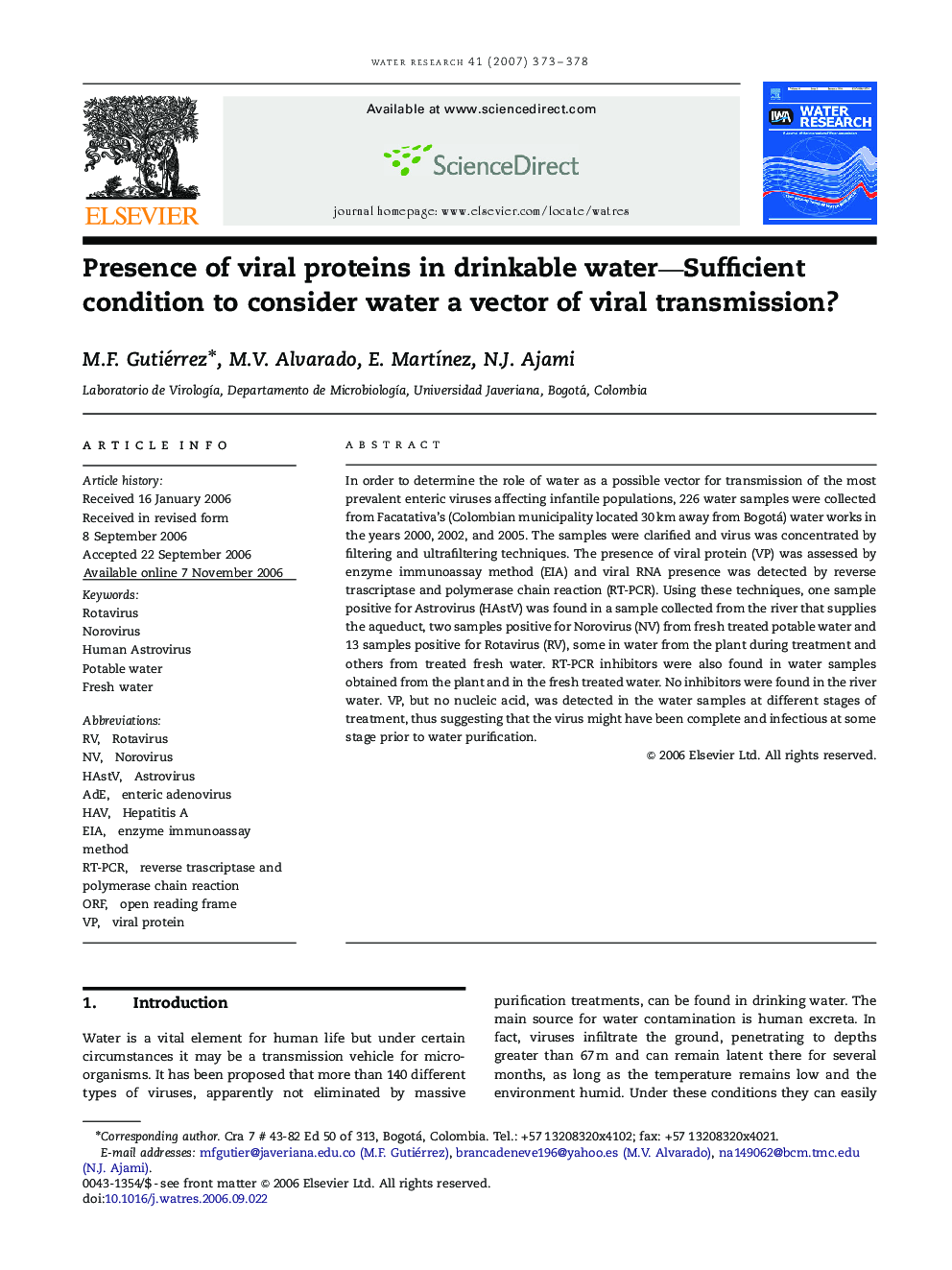| Article ID | Journal | Published Year | Pages | File Type |
|---|---|---|---|---|
| 4486865 | Water Research | 2007 | 6 Pages |
In order to determine the role of water as a possible vector for transmission of the most prevalent enteric viruses affecting infantile populations, 226 water samples were collected from Facatativa's (Colombian municipality located 30 km away from Bogotá) water works in the years 2000, 2002, and 2005. The samples were clarified and virus was concentrated by filtering and ultrafiltering techniques. The presence of viral protein (VP) was assessed by enzyme immunoassay method (EIA) and viral RNA presence was detected by reverse trascriptase and polymerase chain reaction (RT-PCR). Using these techniques, one sample positive for Astrovirus (HAstV) was found in a sample collected from the river that supplies the aqueduct, two samples positive for Norovirus (NV) from fresh treated potable water and 13 samples positive for Rotavirus (RV), some in water from the plant during treatment and others from treated fresh water. RT-PCR inhibitors were also found in water samples obtained from the plant and in the fresh treated water. No inhibitors were found in the river water. VP, but no nucleic acid, was detected in the water samples at different stages of treatment, thus suggesting that the virus might have been complete and infectious at some stage prior to water purification.
